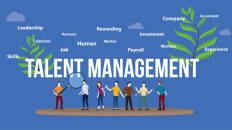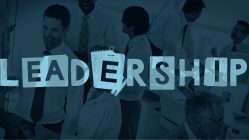Though the term ‘Employer Branding‘ was coined in 1996 it gained gradual relevance from 2010 onwards and remains one of the key differentiators in the employment marketplace. It refers to the image or reputation a company conveys as an employer. This image works as a catalyst to create a perception about a Company’s product, service, and culture in the minds of people who either use the product, see the advertisement, hear from the employees, etc. Employer branding is a critical process and a pivotal differentiator in today’s competitive talent landscape where it becomes extremely challenging to retain the talent pool with plenty of appealing brand choices.In other words, employer branding is everything an organization does to communicate and promote their organization’s Employee Value Proposition.
So what is an EVP?
In today’s corporate world, employees look forward to engaging in organizations that value the skills, competencies, experience, and contributions they bring to work. Covering tangible and intangible factors, from your company values and culture to rewards and opportunities, it introduces the unique benefits and experiences an employee receives in exchange for their skills and experience.
Having said that there is a subtle difference between EVP and Employer Branding, while the former communicates to your employees what they can get in return for working for your organization, the latter serves to attract wider talents both from outside and within the organization.
As per the study done by Kucherov & Zavyalova, attributes of Employee Value Proposition can be segregated into4 categories, i.e. economic attributes (salary, rewards), functional attributes (the content of work, training, and career growth), psychological attributes (corporate culture, interpersonal relations in the company, teamwork ) and organizational attributes (Company history, reputation among the customers, market position and reputation of top management).
Also read: Making Sense of Trends in Talent Management by Anupreeta Lall
Employer branding can be both External and Internal. Internal branding aims to create better employee experiences thereby fuelling employee motivation and engagement, increasing employee retention, and boosting overall productivity. Positive Internal branding or EVP can be achieved through various means and not limited to :
- Safe Working Conditions for all individuals
- Lucrative Pay for Performances
- Flexible Working hours or Work from anywhere option
- Sponsorship for Higher Education
- Access to competitive new-medical treatments like fertility treatments along with existing ones
- Prolonged paternity thereby shattering gender stereotypes
- Innovative employee benefits and perks throughEsops, Phantomshares, and other Profit sharing initiatives
External Employer Branding likewise plays a vital role in the job market in the following ways:
- Attracting prospective candidates–It is found that a positive brand image attracts a higher number of qualified candidates ( both fresher and experienced ) with lesser efforts from the employer’s side.
- 15% Reduction of Cost Per hire – Since candidates directly approach employers having a reputation for being one of the best employers, they tend to spend less time and less money on sourcing the right mix of people for open positions.
- Offer regret reduction comes down by5%
- Increase of Employee Referral Rate–Happy and motivated employees refer their friends and relatives to their companies as they are the brand advocates who have experienced great places to work within the company, thereby increasing the referral rate.
Measuring Employer Brand through the HR lens :
Firstly it depends on the employer’s target audience andusually, there lies a major challenge while reaching out to Millennials and Gen Z with employer branding that resonates with them. HR professionals can analyse various communication platforms to understand how the company brand is perceived by others.
- Company Career page – How effective is the careers webpage in promoting the company and employer brand to potential employees?
- Career Site–Presence in various job portals, making applicants share their resumes easily to vacancies featured across various external career sites.
Employer branding can be both External and Internal. Internal branding aims to create better employee experiences thereby fuelling employee motivation and engagement, increasing employee retention, and boosting overall productivity.
- Presence across Social Media – How active is the company across various social media platforms like Linkedin, Twitter, Facebook, etc pages trying to understand what prospective candidates are expressing about your company and how often are they trying to engage with you?
- Recruitment Process – The touchpoints can be both Campus hires and lateral recruits, here we need to evaluate but not limited to: how manycandidates turn up during the recruitment drives, how many candidates drop out after getting the offers, how many candidates join us through employee referral establishes how sought after is your company’s brand.
- Exit Interviews–These interviews help gain insights about attrition and identify the trigger for leaving. The data collected will throw interesting facts about thecompany’s perceived brand image amongst employees who resigned and left.
To sum it up Link Humanshas interestingly shared 16 Employer Brand Attributes that can be important takeaways while Creating and Managing an Appealing Employer Brand –Balance & Wellbeing, Benefits and Perks, Business Reputation, Career Progression, Company Culture, Change & Stability, Diversity & Inclusion, Environmental, Social & Governance, Innovation & Technology, Job SatisfactionLearning& Development, Management & Organization, Mission & Purpose, Remuneration, Team & People, Workplace.
Stay connected with us on social media platforms for instant updates click here to join our LinkedIn, Twitter & Facebook

























